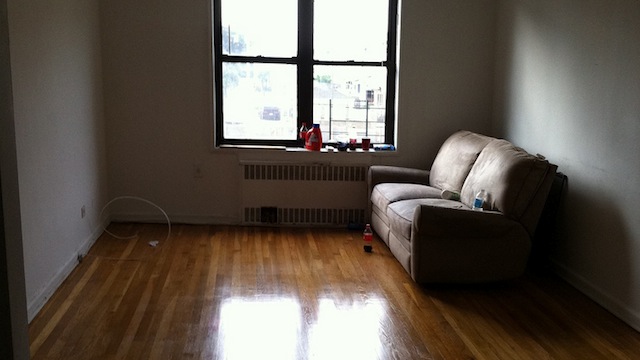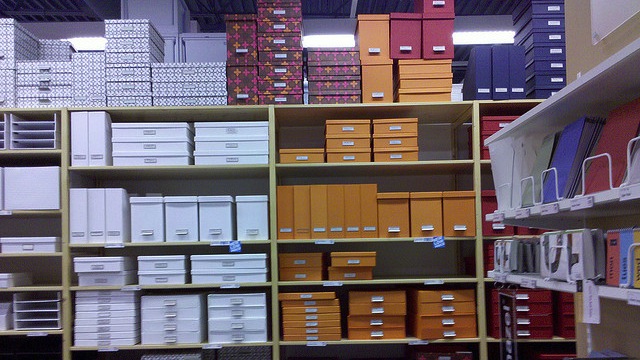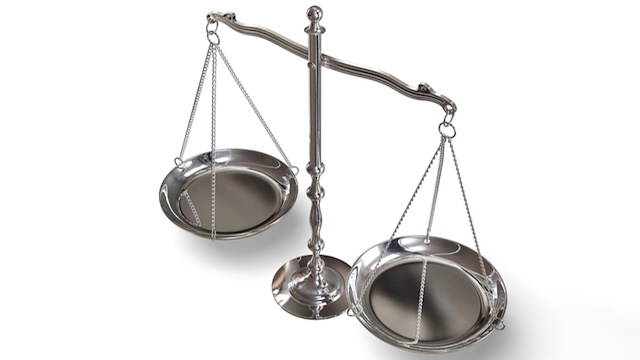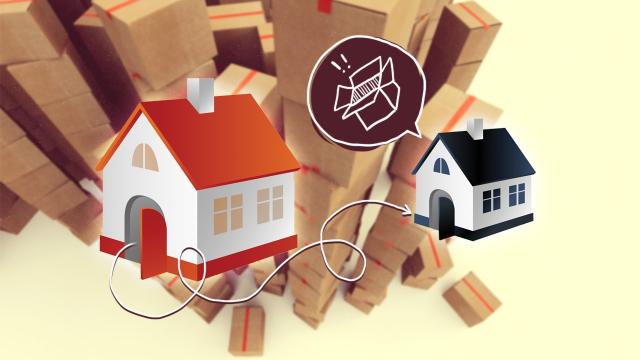When you’re moving from a palatial estate to a tiny apartment, or you’re moving in with your significant other, downsizing is in order. Moving from a large home to a smaller space can be tricky, and while it’s easy to say “just get rid of your extra stuff”, actually doing it is much harder. Here’s how to make the transition as smooth as possible.
Over the past few years, many people have downsized. Some opt to live in a smaller space because it’s in a desirable neighbourhood, close to work or near amenities. The two biggest cost concerns when looking for a place to live are size and location. Regardless of why you’re downsizing, there are some ways to make the move easy.
Take Inventory: What Would You Replace If It Were All Gone?

The first thing to do is take an inventory of your belongings. Ask yourself: If everything I owned was lost in a fire, what would I replace? Take stock of the things that are important to you, as well as the things that you could live without or could downsize along with your living space.
Ideally, you’ll make three lists: must-haves, can-live-withouts and things-I-could-replace. Your must-haves obviously need to come with you. Your live-withouts are the things you could sell, donate or get rid of entirely in some fashion. That doesn’t mean you’ll get rid of them — just that if space becomes a concern they’re the first ones to go. Your could-replace list should be reserved for things that you could potentially sell and replace with something smaller, such as a smaller TV or space-saving furniture. Plus, taking a full inventory of your things is a great way to make a detailed home inventory, for that renter’s or homeowner’s insurance that you should absolutely have.
If you’re moving into a smaller space with someone else and combining households, this step is even more important, not just for you but for the person you’re moving in with as well. Go through your inventories together. Be ruthless with your lists too — it’s often said that the things you own expand to fill the space you live in, but the opposite, that they contract to fit nicely, never happens.
Sell, Sell, Sell: What Are You Better Off Owning Vs Having Money to Buy?

The next step is to part with those things that you don’t need and sell them for cash. We’ve given you a complete guide to selling your unwanted stuff for the most possible money, so get together with your neighbours and host a garage sale to get rid of furniture and appliances. The core part of downsizing is to downsize, so try to make as much money as you can from the things you won’t take with you. The more money you make, the more you’ll be able to buy things that are size-appropriate for your new home.
Similarly, think about some of the things you own that are just “insurance” items. For example, an extra mattress in the garage — those things you keep for no reason other than the possibility of something you do use every day breaking. Those are prime candidates to sell: the things you’re keeping are only depreciating in value. You’ll do yourself a favour by stashing the money you get from them in a savings account and buying a couch or a futon if you ever need one instead of holding on to an old, musty one just in case.
Decluttering and downsizing is hard, make no mistake — selling things makes it easier, because, honestly, who doesn’t like money? If you need more help though, check out our guide to kicking your clutter habit for tips to make the whittling process as easy as possible. If you’re a clotheshorse, we have some specific tips to help you out there too.
Finally, whatever you do, if you can’t sell it, don’t hesitate to donate it to charity. If you can’t make use of it and it’s in good condition, someone else will, and they’ll appreciate it.
Never Duplicate If You Can Help It

If you’re moving into a smaller space with someone, making sure you go over your inventories together is essential. The last thing you want to do when trying to combine two households is to find out that you’ve both brought two full sets of dishes, flatware, glasses and furniture pieces. This is where it’s even more important to have a home inventory in-hand before you move, and that you both sit down and make decisions on the things you want to keep, who brings the dishes, who brings the glasses, who brings the bed and who brings the couches.
We talked about easing the transition when a significant other moves in, but the big challenge when you move in with a partner in a smaller space will be making sure you both bring only what you really need and really want, and that you’re both on the same page about exactly how minimal your new home will be.
Even if you’re not moving in with someone else, duplicating items is a terrible idea. It should be easier to avoid since the only person you’re dealing with is you, but keep in mind that when you’re downsizing you may not have room for enough beer glasses to entertain a crowd of 20, and that most nights it will be you and maybe your significant other — two or four (in case you have a few guests) will suffice. Get out of the mindset that you can have multiples of an item just because you prefer one or the other in very niche circumstances, and you’ll be in good shape.
Give Yourself Plenty of Storage Options

Once you do make the transition to your new home, make sure to make use of all of the available storage space you can get your hands on. Ottomans that open up and have space inside, wall-mounted shelving, under-bed storage boxes — they’re your best friends if you’re moving to a smaller space. One rule of storage when it comes to small spaces is that you should store up, not out, so if you can make use of your walls for storage and shelving, do it — it will keep things off the floor and out of your immediate living space. We have some storage tips to help you out, and a trip to IKEA will always offer some inspiration to help you get organised.
Think about what you can do with the stuff you have before you go buy a bunch of containers that just adds to the overall clutter. We’ve mentioned before that you shouldn’t get seduced by boxes, containers and organisational gadgets — they can often just add to the problem by encouraging you to put stuff you don’t need into pretty boxes that look nice on a shelf when that shelf could be used for something you actually want. Try to think of your downsizing as an opportunity to do something new and live a lighter life with a lighter load instead of spending more money shoehorning the things you have into a smaller space.
As an absolute last resort, consider getting a storage space. You’re essentially paying rent to someone just to house your stuff — stuff that you’re not using, and storage units are almost never a good deal when you do the maths and figure out how much you’ll pay for the unit every year versus the actual value of the items you’re putting into storage. If your items are absolutely essential, sentimental or extremely valuable, and you don’t have room for them, then it’s an option. But if you’re storing things because they’re “just in case” items, sell them, pocket the money and keep the money “just in case”.
Try to Stay Organised, and Be Ruthless About What Enters Your Space

Finally, once you’ve managed to move into a smaller space and you’ve trimmed your possessions down to the things that actually matter to you, adopt a ruthless approach to what comes into your home. Space is at a premium, and an “organised” small space can become a “cluttered” small space without much time or effort. Make sure that everything you bring in, everything you buy or order online, is something you can store with the space you have now and something you really want or need. Make compromises if you have to, such as “I’ll buy these new jeans, but I’ll get rid of as many pairs that don’t fit anymore”, or “I really want this chair, but I’ll have to get rid of my old one to make room for it.”
It may sound logical, but don’t just acquire more things without thinking about where they will go and how they will fit into your lifestyle. When you have large open spaces in your home, it’s one thing to squeeze something in between two other things. When you have no wall space and floor space is at a premium, it’s hard enough to find space to unpack a box that something came in, much less find a place to put the actual delivery.
Downsizing doesn’t have to be a hassle or a horrible experience — it may sound like it, and parting with the things you own can definitely be emotional, but try to think about the life you’ll get in exchange for the crap you’re giving away. If you’re moving to a smaller apartment to shorten your commute, remember that and try to make sure that new life is as happy as possible. If you’re downsizing because you need to save money, think about the money you’ll save and the savings you’ll build up by selling the crap you don’t need. Ise it as motivation to never get stuck in a bad financial position again. Whatever your reasons are, attitude matters — and the more upbeat you can make the process, the smoother it will go.
Pictures: joeymanley/Flickr, AWA/Flickr, Melvin Baker/Flickr, Dave Friedel/Flickr, photo5693/Shutterstock

Comments